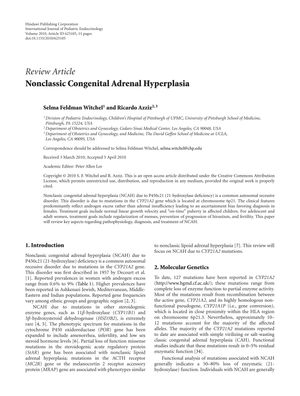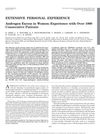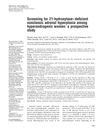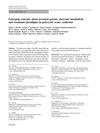Nonclassic Congenital Adrenal Hyperplasia Due to 21-Hydroxylase Deficiency: Pathophysiology, Diagnosis, and Treatment
January 2010
in “
International Journal of Pediatric Endocrinology
”
Nonclassic Congenital Adrenal Hyperplasia 21-hydroxylase deficiency androgen excess hirsutism acne alopecia anovulation menstrual dysfunction ACTH stimulation test glucocorticoid treatment advanced skeletal maturation subfertility spontaneous miscarriages iatrogenic adrenal suppression NCAH hair loss irregular periods corticosteroid treatment

TLDR The document concludes that Nonclassic Congenital Adrenal Hyperplasia requires personalized treatment plans to manage symptoms and fertility, with glucocorticoids being a common therapy.
The document reviewed Nonclassic Congenital Adrenal Hyperplasia (NCAH) due to 21-hydroxylase deficiency, a condition characterized by androgen excess and varying symptoms such as hirsutism, acne, alopecia, anovulation, and menstrual dysfunction. It discussed the pathophysiology, diagnosis, and treatment of NCAH, noting the prevalence of the condition varies by ethnicity and geography, with rates ranging from 0.6% to 9%. The document highlighted the diagnostic challenges due to the mild symptoms and overlap with PCOS, with the acute ACTH stimulation test being the gold standard for diagnosis. Treatment goals for NCAH include normal growth and puberty, regularization of menses, prevention of hirsutism progression, and fertility, with glucocorticoid treatment being used for those with advanced skeletal maturation or seeking fertility. The document also mentioned a study involving 203 pregnancies in 101 women with NCAH, indicating that while there is a greater risk of subfertility and spontaneous miscarriages, many women with NCAH are relatively fertile. It emphasized the need for individualized treatment plans and the consideration of risks associated with treatment, such as iatrogenic adrenal suppression.





